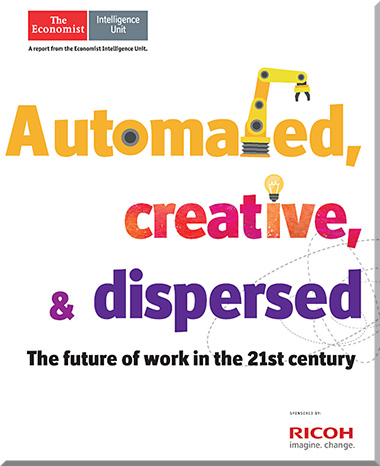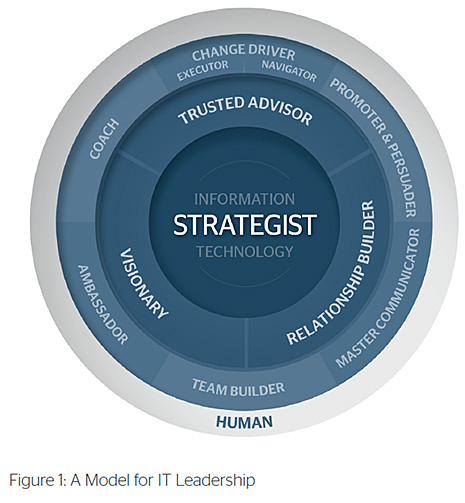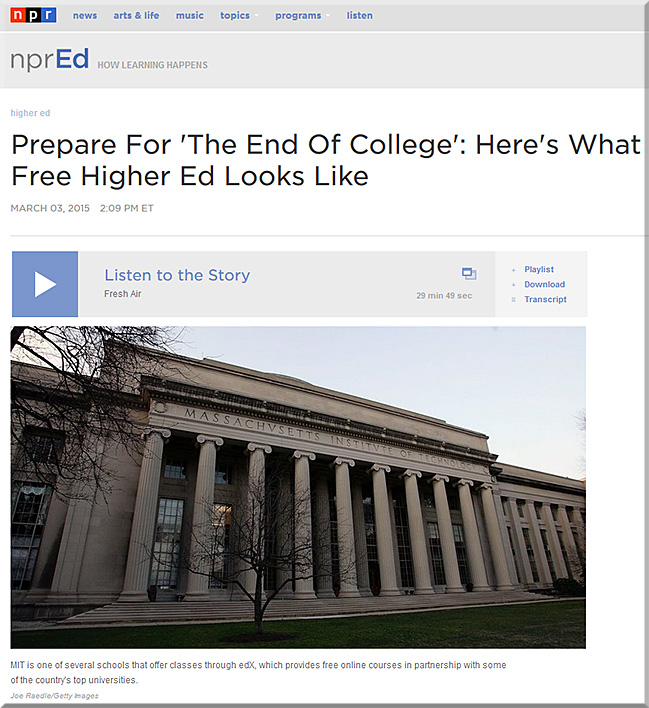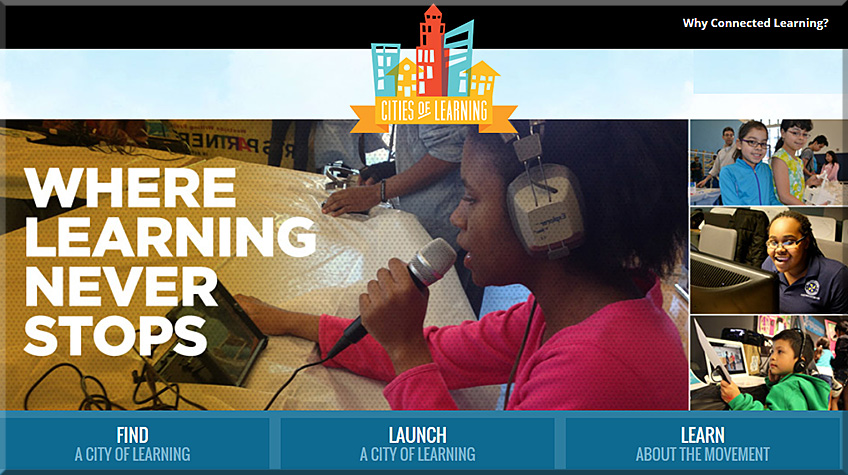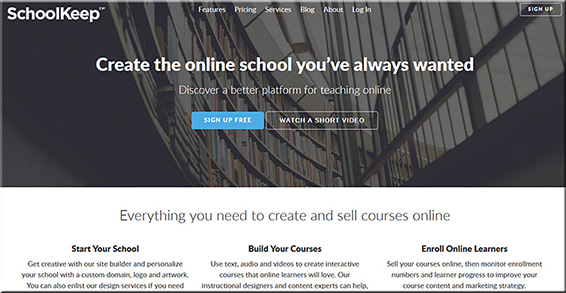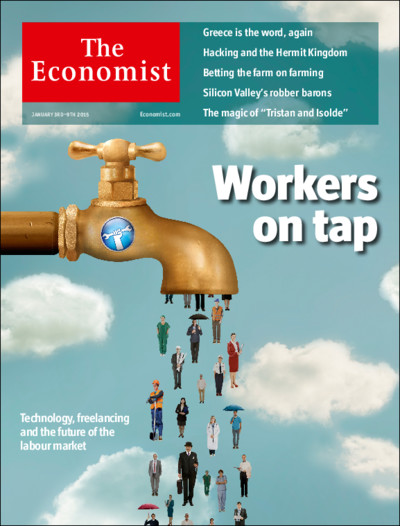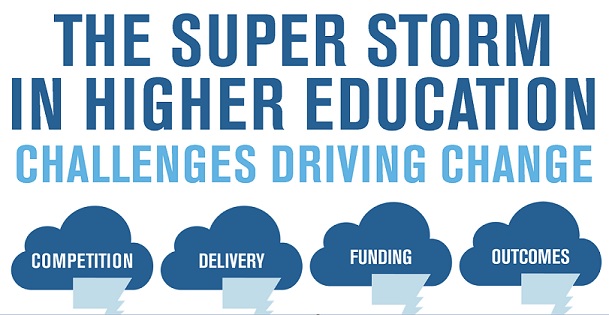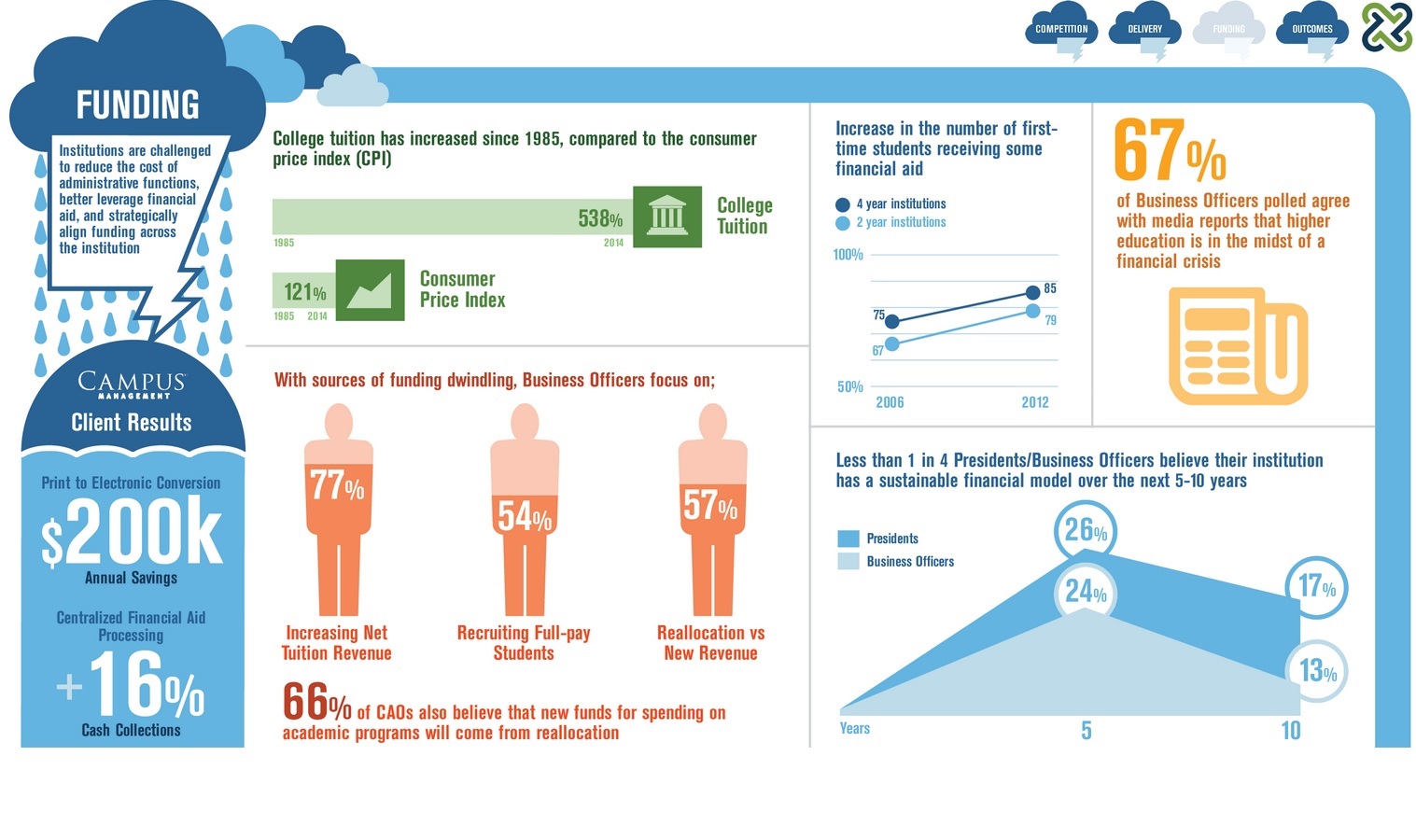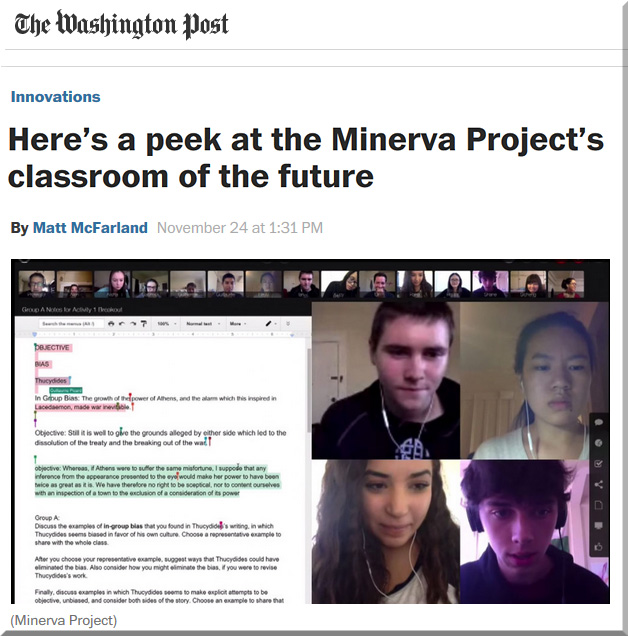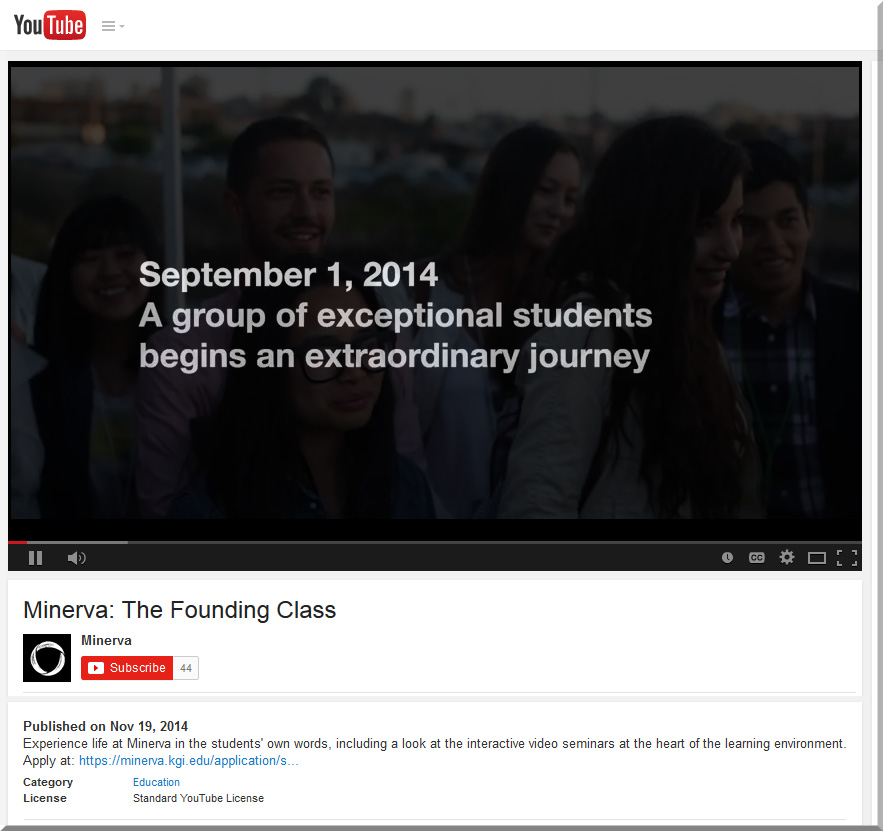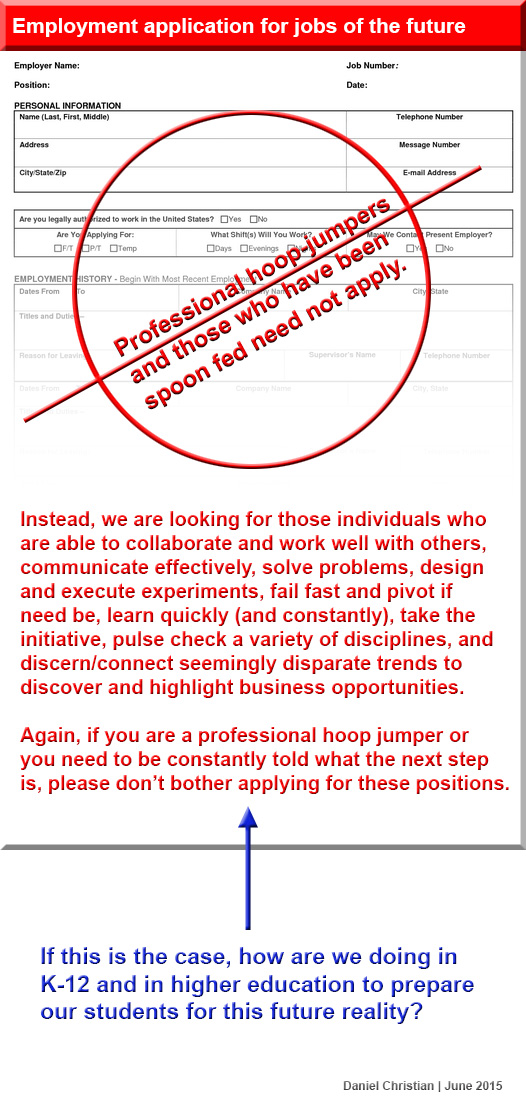
Shocker: 40% of workers now have ‘contingent’ jobs, says U.S. Government — from forbes.com by Elaine Pofeldt
Excerpt:
Tucked away in the pages of a new report by the U.S. Government Accountability Office is a startling statistic: 40.4% of the U.S. workforce is now made up of contingent workers—that is, people who don’t have what we traditionally consider secure jobs.
There is currently a lot of debate about how contingent workers should be defined. To arrive at the 40.4 %, which the workforce reached in 2010, the report counts the following types of workers as having the alternative work arrangements considered contingent. (The government did some rounding to arrive at its final number, so the numbers below add up to 40.2%).
- Agency temps: (1.3%)
- On-call workers (people called to work when needed): (3.5%)
- Contract company workers (3.0%)
- Independent contractors who provide a product or service and find their own customers (12.9%)
-
Self-employed workers such as shop and restaurant owners, etc. (3.3%)
-
Standard part-time workers (16.2%).
In contrast, in 2005, 30.6% of workers were contingent. The biggest growth has been among people with part time jobs. They made up just 11.9% of the labor force in 2005. That means there was a 36% increase in just five years.
In the future, employees won’t exist — from techcrunch.com by Tad Milbourn
Excerpt:
Contract work is becoming the new normal. Consider Uber: The ride-sharing startup has 160,000 contractors, but just 2,000 employees. That’s an astonishing ratio of 80 to 1. And when it comes to a focus on contract labor, Uber isn’t alone. Handy, Eaze and Luxe are just a few of the latest entrants into the “1099 Economy.”
Though they get the most attention, it’s not just on-demand companies that employ significant contract workforces. Microsoft has nearly two-thirds as many contractors as full-time employees. Even the simplest business structures, sole proprietorships, have increased their use of contract workers nearly two-fold since 2003.
The unsung heroes of the on-demand economy — from medium.com by Alex Chriss
We need to rethink the notion of entrepreneurship in the on-demand economy and build the tools and infrastructure to support the growing self-employed workforce.
Excerpt:
Enabled by the ubiquitous connectivity and power of smartphones, entrepreneurs are opening shops on Etsy, working as virtual assistants through oDesk, tackling neighborhood jobs on TaskRabbit, or driving on demand with Uber.
This new economy isn’t limited to low-paying gigs either. There are highly skilled professionals with advanced degrees from top 10 schools opting to work for themselves instead of a big firm. Consider the MBAs earning $100-$150 an hour through online consulting firm HourlyNerd or the lawyers making more than that on UpCounsel.
The Handy housecleaner and the UpCounsel attorney share a common characteristic: They’re a business of one.
…
This new wave of entrepreneurs — the self-employed workforce — is accelerating a broad trend we’ve been watching closely for nearly 10 years and started documenting in the year 2007 B.U. –before Uber.
They are part of the massive growth in the number of independent professionals. Full-time jobs with their corporate grab bag of benefits are becoming scarcer by the day. In the near future, working full time for a single company that offers little flexibility or work-life balance will become as outdated as the notion of staying with one company for your entire working life.
New survey: 40% of unemployed have “given up” — from prweb.com
Express Employment Professionals released the results [on May 20th, 2015] of its second annual in-depth poll, “The State of the Unemployed,” revealing that 40 percent of unemployed Americans agree to some extent that they have completely given up looking for work.
Excerpt:
Express Employment Professionals released the results [on May 20th, 2015] of its second annual in-depth poll, “The State of the Unemployed,” revealing that 40 percent of unemployed Americans agree to some extent that they have completely given up looking for work.
That figure, though high, represents a slight improvement from 2014, when 47 percent said they had given up.
The survey of 1,553 jobless Americans age 18 and older was conducted online by Harris Poll on behalf of Express Employment Professionals between April 7 and 29, 2015, and offers a rare look at the background and attitudes of the unemployed, their approach to the job hunt, who they blame for their current situation, and how they are holding up through tough times.
New self-learning systems will reduce reliance on humans during ramp-up — from wtvox.com by Aidan Russell
Excerpt:
Robots are cracking eggs and making ice cream sundaes. These aren’t just party tricks. The way robots learn to do complex tasks is changing and that has profound implications for the future of manufacturing.
The egg-cracking robot comes courtesy of researchers at the University of Maryland and NICTA, an information and computer technology research centre in Australia. Their robotic system learns processes by watching YouTube videos.
…
It’s not difficult to see how systems like this might be utilised to improve automated manufacturing or bring new automation systems to areas of production that haven’t seen much automation yet. An investment in a single robotic system capable of learning a variety of tasks without specialised programming would be attractive to small manufacturers that do short production runs, for example.
A bot that can learn from watching other people could also fine tune its own actions through trial and error, essentially learning from its mistakes. That’s what researchers at Lappeenranta University of Technology (LUT) in Finland had in mind when they developed a self-adjusting welding system.
Will humans go the way of horses? — from foreignaffairs.com by Erik Brynjolfsson and Andrew McAfee
Labor in the Second Machine Age
Our mental advantages might be even greater than our physical ones. While we’re clearly now inferior to computers at arithmetic and are getting outpaced in some types of pattern recognition—as evidenced by the triumph of Watson, an artificial-intelligence system created by IBM, over human Jeopardy! champions in 2011—we still have vastly better common sense. We’re also able to formulate goals and then work out how to achieve them. And although there are impressive examples of digital creativity and innovation, including machine-generated music and scientific hypotheses, humans are still better at coming up with useful new ideas in most domains.
It is extraordinarily difficult to get a clear picture of how broadly and quickly technology will encroach on human territory (and a review of past predictions should deter anyone from trying), but it seems unlikely that hardware, software, robots, and artificial intelligence will be able to take over from human labor within the next decade. It is even less likely that people will stop having economic wants that are explicitly interpersonal or social; these will remain, and they will continue to provide demand for human workers.
From DSC:
Stop right there! Hold on! Those of us working in education or training need to be asking ourselves:
What do these MASSIVE trends mean for the way that we are educating, training, and preparing our learners and employees!?!?
This is not our grandfathers’/grandmothers’ economy and way of life! From here on out, people must be able to adapt, to pivot, to change — and they must be able to learn…continually and quickly. They need to be able to know where to go to find information and be able to sort through the content to find out what’s true and relevant. They need to know under what circumstances they learn best.
Finally, becoming familiar with futurism — looking down the pike to see what’s developing, building scenarios, etc. — is now wise counsel for a growing number of people.
Institutions say this is the new priority in higher education — from ecampusnews.com by Ron Bethke; with a shout out to eduwire.com for their comments/posting on this
Survey reveals institutions, like UC Irvine, are putting greater effort into tracking graduates’ success and helping them continue learning through short-term programs.
Excerpt:
The days of warmly wishing graduates farewell and good luck after four years is not a sustaining strategy for colleges and universities, says a new report. Instead, offering online programs to keep graduates coming back to the institution for continuing career education is quickly becoming higher-ed’s newest must-offer.
…
Simply better understanding how graduates are doing isn’t the only way institutions are showing their commitment to lifelong career success. Though only 4 percent of respondents currently offer short-term alternative credentials such as digital badges and short-term certificates for graduates changing careers or looking to learn new skills, 50 percent of responding senior executives plan to add these customizable certificates to their portfolio in the next five years, with another 30 percent planning to offer digital badges in the same time frame.
“Universities and colleges want better ways to connect with alumni for years to come,” said EAB Practice Manager Carla Hickman. “This means offering not just surveys, but also new, intensive learning opportunities that support lifelong achievement and success of students.”
UC Irvine, for example, is currently working on setting up special communities for alumni taking various MOOCs on Coursera, in order to bring more graduates back to learn in more meaningful ways.
…
“[Millennials] are seeking short-format courses and credentials for ‘just-in-time’ and ‘just enough’ education.
From DSC:
Given the pace and far-reaching impact of today’s changes, lifelong learning is now a requirement. Learning new things, staying on top of trends, peering out into the future to see what’s coming down the pike — these are important actions that we all need to take to remain marketable. If we see robots, algorithms, and automation coming into the neighborhood of our particular jobs, then we had better be looking and preparing for something else. At that point, we’ll need to pivot…to adapt…to change.
Speaking of change, the article above reminds me of a potentially more utilized “distribution channel” — or model, if you will — that universities, colleges, and businesses could be moving towards in the future. And that is, that organizations could be moving towards providing streams of relevant, curated, dependable content to learning hubs around the globe. Hubs that feature blended learning where some of the content is beamed in from Subject Matter Experts (such as professors, teachers, trainers, and others) and some of the content is dealt with in a face-to-face manner. The beamed in content could be done synchronously and/or asynchronously. And as people often like to learn with others around a physical location, I could see this type of model taking off.
It would feature smaller, bite-sized chunks of content and investigations into a topic. But the model would have to allow for such a learning provider to be nimble and responsive — always up-to-date. That way they could provide such “just-in-time” and “just enough” learning.
Other words that come to my mind here — both as individuals and as institutions — are the following:
- Reinvent
- Staying relevant
- Surviving
- Being responsive

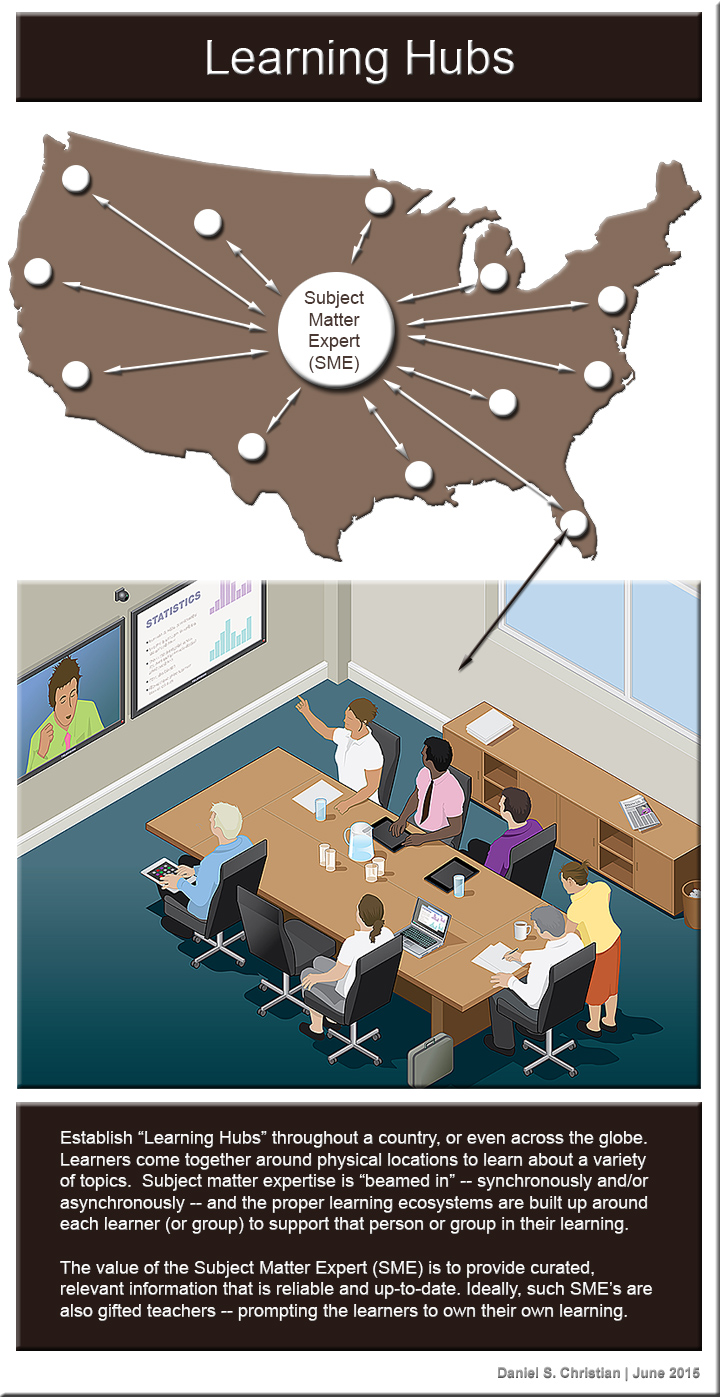
Automated, creative & dispersed: The future of work in the 21st century — from The Economist
Date Published:
May 20th 2015
Excerpt:
The key findings are as follows:
- In the next decade-and-a-half, digital technology will dissolve the concept of work as we know it.
- The growing use and sophistication of automation will shift the emphasis of human employment towards creativity and social skills.
- This new reality of work will require a new, more nurturing approach to management.
Contents
About the research
Executive summary
Introduction
Your workplace is… everywhere
The hospital of the future
Creative and social skills will dominate the automated world
The bank of the future
Well-being and employee development top the management agenda
The university of the future
The government of the future
Conclusion
Appendix: Survey results
This requires university workers to develop new skills, she says. Ms Shutt predicts that in the future lecturers will be encouraging more of their students to take work placements or even launch their own start-ups, and developing relationships that give industry a greater input
into the direction of research. “We need to develop skills in interaction with business and in preparing students for the work world.”
Cash Monitoring List Unveiled — from insidehighered.com by Michael Stratford
Excerpt:
WASHINGTON — The U.S. Department of Education on Tuesday, for the first time, named most of the hundreds of colleges whose federal aid it has restricted because of concerns about their finances or compliance with federal requirements.
The department released a partial list of the nearly 560 institutions that, as of March 1, were subject to the financial restrictions known as heightened cash monitoring. Most of the colleges — 487 institutions — were on the lower level of scrutiny, and 69 were subject to the higher, more stringent restrictions.
Increasing Transparency and Accountability for Students — from ed.gov
Excerpt:
Higher education remains the most important investment any person can make in their future. In the several months I’ve been at the U.S. Department of Education, I have had a number of conversations with students and families that have inspired me to double down on our commitment to making college more affordable and accessible. A big part of our work toward that goal has been to increase both the quantity and quality of information that students, families, borrowers and the public have about higher education.
[On 3/31/15] we are taking another step to increase transparency and accountability. We are releasing a list of colleges and universities that are on what we call Heightened Cash Monitoring. There were about 560 institutions on this list as of March 1. The list has been released to members of the press that requested it, and will be published on the Department website in the coming days and updated on a regular basis.
From DSC:
Most likely, these organizations will be in even bigger trouble as news of this list gets out — something the U.S. Department of Education knew all along and was the key reason they weren’t releasing it I’d wager. However, many people have been asking for this list to be made public; the recent closing of Briar College may have impacted the U.S. Department of Education’s decision here…I’m not sure.
But again, I’m going to ask, are those of us within higher education willing to change? To adapt? To respond to shifting landscapes, needs, economic pressures, etc.? If not, what’s it’s going to take? Perhaps if our/your institution’s name was on that list…would that do it? I don’t think we/you want that to happen. More of us had better take action well before that even becomes a remote possibility.
I’m attaching several categories to this posting, including:
Reinvent.
Surviving.
Staying relevant.
Business side of higher ed.
Change.
Pace of change.
Future of higher education.
Game-changing environment.
What does ‘learning’ have to learn from Netflix? — from donaldclarkplanb.blogspot.com by Donald Clark
Excerpts:
Of course, young people are watching way less TV these days, TV is dying, and when they do watch stuff, it’s streamed, at a time that suits them. Education has to learn from this. I’m not saying that we need to replace all of our existing structures but moving towards understanding what the technology can deliver and what learners want (they shape each other) is worth investigation. Hence some reflections on Netflix.
Areas discussed:
- Timeshifting
- Data driven delivery — Netflix’ recommendations engine
- Data driven content
- Content that’s accessible via multiple kinds of devices
- Going global
From DSC:
I just wanted to add a few thoughts here:
- The areas of micro-credentials, nano-degrees, services like stackup.net, big data, etc. may come to play a role with what Donald is talking about here.
- I appreciate Donald’s solid, insightful perspectives and his thinking out loud — some great thoughts in that posting (as usual)
- Various technologies seem to be making progress as we move towards a future where learning platforms will be able to deliver a personalized learning experience; as digital learning playlists and educationally-related recommendation engines become more available/sophisticated, highly-customized learning experiences should be within reach.
- At a recent Next Generation Learning Spaces Conference, one of the speakers stated, “People are control freaks — so let them have more control.” Along these lines…ultimately, what makes this vision powerful is having more choice, more control.

Also, some other graphics come to my mind:
Private Giveaway — from insidehighered.com –by Ry Rivard
Private college in Iowa gives itself to the University of Iowa rather than be forced out of business
Excerpt:
Leaders at the AIB College of Business in Iowa took a look at the future of their small private college and decided to shut down and donate the campus to the University of Iowa.
AIB’s decision, made back in January, is similar in some respects to one made a few weeks later by leaders at Sweet Briar College, a 700-student women’s college in rural Virginia, that announced it plans to close this year.
At AIB, officials figured they would close down before they were forced out of business.
Corinthian Colleges Closing — from huffingtonpost.com
Addendum 5/1/15 re: Corinthian Colleges:
- For-Profit Corinthian Colleges Goes Out Of Business – from buzzfeed.com by
Some 16,000 students at Everest Colleges and other schools will be affected.
Excerpt (emphasis DSC):
Corinthian Colleges, the embattled for-profit college company, announced Sunday that it is ceasing operations, immediately shuttering all of its 28 remaining campuses. The abrupt closure is unprecedented in size: on Monday, some 16,000 students at Corinthian’s Everest, Heald, and Wyotech College chains, most of them in California, will have no school to attend.

California Attorney General Kamala Harris | Eric Risberg / Via AP Photo
See Bryan Alexander’s list of Queen Sacrifices including Elmhurst College makes a queen sacrifice (3/1/15)
Sweet Briar will close — from insidehighered.com by Scott Jaschik
Excerpt:
Sweet Briar College announced today that it is shutting down at the end of this academic year.
Small colleges close or merge from time to time, more frequently since the economic downturn started in 2008. But the move is unusual in that Sweet Briar still has a $94 million endowment, regional accreditation and some well-respected programs. But college officials said that the trend lines were too unfavorable, and that efforts to consider different strategies didn’t yield any viable options. So the college decided to close now, with some sense of order, rather than dragging out the process for several more years, as it could have done.
Paul G. Rice, board chair, said in an interview that he realized some would ask, “Why don’t you keep going until the lights go out?”
But he said that doing so would be wrong. “We have moral and legal obligations to our students and faculties and to our staff and to our alumnae. If you take up this decision too late, you won’t be able to meet those obligations,” he said. “People will carve up what’s left — it will not be orderly, nor fair.”
Closing with grace — from insidehighered.com by Alice Brown
The closing of Sweet Briar College will, I expect, have little impact on other small, private, rural colleges with small endowments. Most will keep their heads in the sand, live on in a state of denial and continue to produce strategic plans that say little more than “Hope.”
Addendum on 3/17/15:
- Tennessee Temple University To Close After Almost 70 Years — from chattanoogan.com
Tennessee Temple University, after almost 70 years in operation in Highland Park, is set to close after this semester.
Trustees are set to vote on Tuesday morning to merge Temple with Piedmont International University of Winston-Salem, N.C. Students who are not graduating this semester would have the option to continue their education there. Bryan College in Dayton, Tn., and Shorter College at Rome, Ga., would be other options.
…
The merger with Piedmont will officially take place on April 30, pending the approval of the Transnational Association of Christian Colleges and Schools which is the accrediting body for both universities.
Addendum on 3/19/15:
- University that went bankrupt amid tighter federal scrutiny looks to collect money from former students — from insidehighered.com
Addendum on 3/20/15:
- Vermont college cuts staff, adjuncts, classes — from bryanalexander.org
Excerpt:
Lyndon State College announced a series of cuts this week, responding to all too common challenges in today’s higher education.
Addendums on 4/6/15:
- Harrington College of Design will be closing — from collegehistorygarden.blogspot.com by Ray Brown
- Jones International University will close — from collegehistorygarden.blogspot.com by Ray Brown
Technology in Higher Education: Defining the Strategic Leader. Research report. Jisc and EDUCAUSE, March 2015.
Abstract:
Information technology is so much the fabric of the university that its presence is often not fully recognized. The focus in the IT organization has shifted from a tactical to a strategic perspective. With the demand for IT only growing, understanding how IT leaders can best lead in these efforts is essential.
In early 2014, EDUCAUSE and Jisc came together to address a common concern: Understanding the skills required by technology leaders in higher education was an issue often overlooked and one needing immediate attention. The two organizations convened a working group of 10 leading U.S. and U.K. IT leaders to define a set of desired technology leadership characteristics and capabilities, now and in the future. This report identifies 10 key roles played by the IT leaders, describes what each of these roles entails, and outlines the essential skills required to perform them.
The higher education information technology (IT) enterprise has become complex. No longer simply responsible for provisioning IT infrastructure and services, the IT department increasingly helps re-envision business and service models—all in a context of cost and accountability pressures.
From DSC:
It’s good to see the emphasis on strategy and the strategic use of technologies — especially given the increasingly important role that technologies are playing throughout the majority of — if not all — industries in existence today (not to mention the exponential curve we’re on vs. a gradual/linear trajectory). This is true within higher ed as well, as new alternatives/models/methods continue to creep up on traditional institutions of higher ed.
Interview: Kevin Carey, author of ‘The End Of College’ — from NPR Ed
Excerpt:
But author Kevin Carey argues that those problems might be overcome in the future with online higher education. Carey directs the Education Policy Program at the New America Foundation. In his new book, The End of College: Creating the Future of Learning and the University of Everywhere, Carey envisions a future in which “the idea of ‘admission’ to college will become an anachronism, because the University of Everywhere will be open to everyone” and “educational resources that have been scarce and expensive for centuries will be abundant and free.”
…
On the term “University of Everywhere”
The University of Everywhere is the university that I think my children and future generations will attend when they go to college. … They will look very different in some ways, although not in other ways, from the colleges that I went to and that many of us have become familiar with. This will be driven by advances in information technology: So whereas historically you went to college in a specific place and only studied with the other people who could afford to go [to] that place, in the future we’re going to study with people all over the world, interconnected over global learning networks and in organizations that in some cases aren’t colleges as we know them today, but rather 21st-century learning organizations that take advantage of all of the educational tools that are rapidly becoming available to offer great college experiences for much less money.
From DSC:
Though Kevin discusses various items in this interview, I wanted to focus on the topic of online learning and leveraging the Internet for lifelong learning.
Whether out of fear, self-preservation, or for some other reasons, there continues to exist within higher education a group of people who still discount the power of the Internet to offer opportunities for learning throughout one’s lifetime. They poo-poo online learning for example, looking down upon it and assert that such methods can’t measure up to the traditional face-to-face based learning experiences. Never mind that the majority of these folks — it not all of them — have never taught online nor have they taken a well-executed, formal online-based course. They don’t realize how far various technologies have come to provide powerful, effective, highly-convenient learning experiences. They just continue to poo-poo it:
Only 27.6% of chief academic officers reported that their faculty accepted online instruction in 2003. This proportion showed some improvement over time, reaching a high of 33.5% in 2007. The slow increase was short-lived, however. Today, the rate is nearly back to where it began; 28.0% of academic leaders say that their faculty accept the “value and legitimacy of online education.”
Meanwhile, the world continues to change, pressing needs continue to amass, technologies continue to emerge and morph, and many outside of higher ed are starting to care less and less about what those stuck in traditional higher ed even have to say. They’re beginning to design other alternatives. See below for some examples.
With that said, there’s also a sizable group of us who are working hard to innovate and to leverage the power of the Internet — who seek to reduce the price of obtaining a degree, to make quality education more affordable and accessible to the masses, and who seek to provide a balance of the liberal arts/foundational skills with the skills that are needed out in the workplace. Also see below for examples of this.
DSC: I write these reflections down to urge those of us working within higher education NOT to be like the Smith Coronas of the world, NOT to be like the Blockbusters and Kodaks of the world — who, to their very dying day, clutched tightly to their beliefs/strategies/business plans, not seeing the tidal waves that were approaching them.
————–
The New Normal — from edtechdigest.wordpress.com by Victor Rivero
A dearth in practical technology skills calls for an online boot camp approach.
Excerpt:
The ecosystems of many companies are changing as baby boomers retire and workplaces are filled with a strange and not fully functioning blend of digital immigrants, with fresh new academic graduates. In many cases these graduates have invested considerable time and money in traditional offline learning and have come out overqualified yet drastically under skilled.
…
Many people who make the switch are ready for change and want it to happen quickly. Online training through technology boot camps for example, means they can pick up key technology skills, and as a result make a total career change; transitioning from being unemployed to becoming a busy productive freelancer in a matter of months. As a result, offline learning is losing ground while online learning is gaining traction by the second.
From DSC:
Can those of us working within higher ed offer such bootcamps?
Doing so would not only help learners of all ages but would also create new sources of (sorely-needed) revenue. Perhaps these sorts of bootcamps shouldn’t have to be vetted through the normal committees and mechanisms — as doing so will surely keep us from providing the level of responsiveness as the increasingly-fast-paced world now requires. Perhaps we leave those decisions up to the relevant, knowledgeable faculty members who can then team up with innovative staff and administrators to create and deliver these offerings.
————–
Udacity kicks off enrollment for its Swift-focused iOS developer ‘nanodegree’ — from techcrunch.com by Darrell Etherington
Excerpt:
If you’re looking for a way to gain the skills necessary to get a gig developing for iPhone and iPad, but unwilling to commit to a full-time college or university schedule, Udacity might have the answer. The online education platform debuted something called a “nanodegree” last year, and enrollment for the iOS developer edition of the same just opened to applicants today. Enrollment is open to anyone willing to spend $200 per month to participate (with a one-week free trial included) and closes at the end of March 10.
————–
Hands-On Data Science & Engineering: A 5-Day Bootcamp
User Experience Design Immersive — A 10-Week, Full-Time Career Accelerator in Boston
Python Programming for Beginners — set your own price
————–
Re-imagining Learning & Credentialing in a Connected World — from etale.org by Bernard Bull
Excerpt (emphasis DSC):
What happens when we don’t think of these as three disconnected and unrelated learning pathways? What if we see this as representative of a city or region in which one travels on a lifelong learning journey? What possibilities does that create for us? Consider a model where credentials can be provided as people demonstrate competence through any of these stops along the way, whether it is the weekend workshop, the self-guided tour, the self-study stop, or a formal course. This is one of the interesting and exciting possibilities of micro-credentials and digital badges. Their affordances give us a greater ability to imagine such contexts, as evidenced by the cities of learning initiatives.
————–
ACE and Blackboard unveil research on alternative pathways to degree completion — from acenet.edu
Papers on Credit for Prior Learning and Competency-Based Education Practices to be Released
Excerpts:
New research released [on 2/20/15] will shed light on how two approaches to creating alternative pathways to college graduation for post-traditional students are working.
…
The first paper is “Credit for Prior Learning: Charting Institutional Practice for Sustainability,” which identifies and addresses some of the cultural barriers and successful strategies to institutions incorporating CPL.
…
The second paper is “The Currency of Higher Education: Credits and Competencies,” which explores the challenges in adapting the traditional credit hour to an information-age economy that relies on greater flexibility and productivity.
————–
Harvard Business School hopes to fundamentally change online education with its new $1,500 pre-MBA program — from businessinsider.com.au by Richard Feloni
Excerpt:
This week, Harvard Business School launched an innovative new online education program to the public that it thinks is so far ahead of free online courses that it’s worthy of a $US1,500 price tag.
The 11-week pre-MBA program called CORe accepts about 500 students and is taught in the school’s signature case-study method. The first official session started on Feb. 25, and applications are open for spring and summer sessions.
CORe is the flagship offering from HBS’s new digital platform, HBX, which aims to become a full-fledged branch of the school rather than a place to dump video recordings of classroom lectures.
————–
Constructionism 3.0 — from steve-wheeler.blogspot.com
Excerpt (emphasis DSC):
Listening to MIT’s Vijay Kumar speaking is always informative. Kumar has vast experience in research in online and digital learning environments, and he conveys his knowledge in an accessible style. He was keen to argue that the future of education has two fundamental characteristics – open and digital. His previously published book Opening Up Education explains the first in plenty of detail, but the second, digital, was uppermost in his keynote presentation at ELI 2015, the Saudi Arabian premier e-learning event. He said that it is at the intersection of digital and open that learning innovation occurs, and that education will be transformed if attention is paid to them both.
————–
Excerpts (emphasis DSC):
There are 37 million Americans like Joe who have some college but no degree. Many of them, like Joe, need to re-skill to be able to make a living. Many of them don’t have the time or money to be able to access a traditional certificate or degree program, even if it is online. In the language of disruption, they are non-consumers of traditional certificate and degree programs.
…
This emerging class of asynchronous online courses, both paid and free, is doing something similar by targeting primarily non-consumers—those not considering formal higher education (either again or for the first time). But these non-consumers are now improving their skills one competency at a time and certainly consuming education.
…
Traditional institutions of higher education are unlikely to fill this demand. Their institutions were not built to update and develop curriculum and short-term programs rapidly. Those best equipped to teach may be practitioners and real-world experts using online platforms that allow them to reach anyone instantly.
…
This is the sharing economy of education. Adults can choose the competencies they need, from pivot tables in Excel to training a new puppy, and learn them when they need them online, no longer tied to academic calendars or seminar dates.
————–
HEDLINE: Udemy’s Online Course Millionaires — from edukwest.com by Kirsten Winkler
Excerpt:
The top three Udemy instructors are currently:
Web Development – Rob Percival
Earnings: $2.8 million
Students: 120,000
Web Development – Victor Bastos
Earnings: $900,000
Students: 52,000
Personal Development – Alun Hill
Earnings: $650,000
Students: 47,000
————–
————–
LoudCloud Systems and FASTRAK: A non walled-garden approach to CBE — from mfeldstein.com by Phil Hill
Excerpt:
As competency-based education (CBE) becomes more and more important to US higher education, it would be worth exploring the learning platforms in use. While there are cases of institutions using their traditional LMS to support a CBE program, there is a new market developing specifically around learning platforms that are designed specifically for self-paced, fully-online, competency-framework based approaches.
…
…my interest here is not merely to review one company’s products, but rather to illustrate aspects of the growing CBE movement using the demo.
————–
As a whole new kind of college emerges, critics fret over standards — from hechingerreport.org by Matt Krupnick
Competency education offers credit for experience, but who decides? Critics worry whether competency-based education is growing too fast for standards to be set.
————–
Are prestigious private colleges worth the cost? — from The Wall Street Journal by Douglas Belkin
A high-school senior, a recruiting manager from Deloitte and a college professor weigh in
From DSC:
Even the very presence of this article in the Wall Street Journal should greatly concern those of us within higher education and this increasingly-common question should elicit a response at each of our institutions. It illustrates the pendulum swinging away from the strong public support of higher ed. Such support is weakening, as the price of higher ed has increased. And similar to the line in Jurassic Park, people will find a way. If they can’t afford traditional higher education, alternatives are sure to appear. Several of the aforementioned items bear witness to this fact.
————–
The future of work
There’s an app for that — from economist.com
Freelance workers available at a moment’s notice will reshape the nature of companies and the structure of careers
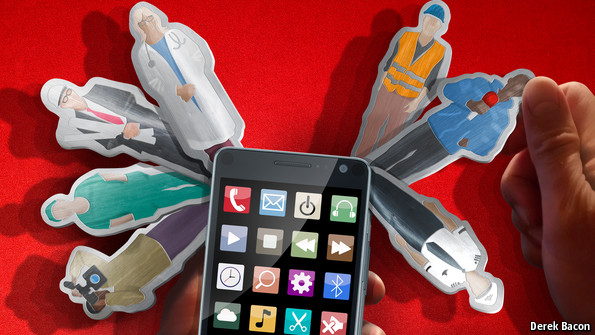
Excerpt:
HANDY is creating a big business out of small jobs. The company finds its customers self-employed home-helps available in the right place and at the right time. All the householder needs is a credit card and a phone equipped with Handy’s app, and everything from spring cleaning to flat-pack-furniture assembly gets taken care of by “service pros” who earn an average of $18 an hour.
…
Handy is one of a large number of startups built around systems which match jobs with independent contractors on the fly, and thus supply labour and services on demand.
…
The obvious inspiration for all this is Uber, a car service which was founded in San Francisco in 2009 and which already operates in 53 countries; insiders say it will have sales of more than $1 billion in 2014.
…
This boom marks a striking new stage in a deeper transformation. Using the now ubiquitous platform of the smartphone to deliver labour and services in a variety of new ways will challenge many of the fundamental assumptions of 20th-century capitalism, from the nature of the firm to the structure of careers.
…
The on-demand economy will inevitably exacerbate the trend towards enforced self-reliance that has been gathering pace since the 1970s. Workers who want to progress will have to keep their formal skills up to date, rather than relying on the firm to train them (or to push them up the ladder regardless). This means accepting challenging assignments or, if they are locked in a more routine job, taking responsibility for educating themselves. They will also have to learn how to drum up new business and make decisions between spending and investment.
Also see:
Professional Millennials and super-powered smartphones are changing the working world — from medium.com and Liquid Talent
Excerpt (emphasis DSC):
This is the year when modern technology squarely intersects with the economy and the workforce. This is the the year that marks a noted change in how we work as individuals, and as a collective. This is the year of the Millennial Generation takeover in our professional world. This is the year that marks the beginning of the Independent Workforce Revolution.
Why?
Two reasons:
1) Millennials take over
Millennials are the largest generation at 82 million strong. They do not have the same priorities as past generations and their professional incentives are quickly changing. They care less about maximizing profit, finding a secure job and taking 2.5 weeks of vacay. In fact, 54% of Millennials assert that they want to start a company one day, or already have. This generation is now 50% of the workforce, and will be 75% of the workforce by 2020. These percentages may seem staggering but with 10,000 Baby Boomers retiring everyday (every single day!) we can see this tectonic shift happening before our very eyes.
2) Mobile technology
We have our economies in our pocket. We can work anytime from anywhere, and source professional opportunities with a simple swipe. The proliferation of mobile productivity apps (ie Slack), globalized workforce platforms (ie eLance) and professional networks (ie LinkedIn) show the power and growth in professional, mobile technologies.
From DSC:
I’ve said it before and I’ll say it again to those of us working in K-12 and in higher education:
We need to be sure that we’re preparing our students to know how to run their own businesses. They need to know how to survive and thrive as freelancers — because chances are they will be freelancing at various points in their career. Our curricula should already be in the process of being updated to address these critical skills. More courses on entrepreneurship for example; also some basic accounting courses as well as coursework involving programming, brainstorming, marketing, and how to use various technologies to collaborate, stay organized, and manage one’s time.
The above items also stress the need for lifelong, accessible/affordable learning; and for constant adaptation and for reinventing oneself in order to remain marketable in the workplace.
Addendum on 2/18/15:
New tech companies say freelancing is the future of work. But there’s a downside for workers. — from washingtonpost.com by Lydia DePillis
More companies are switching their workforce to freelance. Policy needs to catch up.
Excerpt:
If the nation’s way of regulating work revolves around a relationship between an employee and employer, what happens when that relationship no longer exists?
Top 10 IT Issues, 2015: Inflection Point — from educause.edu by Susan Grajek and the 2014–2015 EDUCAUSE IT Issues Panel
EDUCAUSE presents the top 10 IT issues facing higher education institutions this year. What is new about 2015? Nothing has changed. And everything has changed. Information technology has reached an inflection point. Visit the EDUCAUSE top 10 IT issues web page for additional resources.
Excerpt (emphasis DSC):
Change continues to characterize the EDUCAUSE Top 10 IT Issues in 2015. The pace of change seems not to be slowing but, rather, is increasing and is happening on many fronts. There is reason to believe that higher education information technology has reached an inflection point—the point at which the trends that have dominated thought leadership and have motivated early adopters are now cascading into the mainstream. This inflection point is the biggest of three themes of change characterizing the 2015 EDUCAUSE Top 10 IT Issues.. A second dimension of change is the shifting focus of IT leaders and professionals from technical problems to business problems, along with the ensuing interdependence between the IT organization and business units. Underlying all this strategic change, the day-to-day work of the IT organization goes on. But change dominates even the day-to-day, where challenges are in some ways more complex than ever. This “new normal” is the third theme of change.
Andy Grove, Intel’s former CEO, described a strategic inflection point as “that which causes you to make a fundamental change in business strategy.”
Trend: Campuses moving from online to On-Demand — from ecampusnews.com by Meris Stansbury
Management expert discusses why the future for college campuses is on-demand, not just online
Excerpt (emphasis DSC):
IT experts are calling it a super storm of forces that’s changing the way a campus ecosystem operates.
First, the very foundation of student expectations is changing, with requirements for education delivery models that are more flexible and accessible than those of generations past.
Second, the higher-ed market—thanks to the economy and possibilities available via technology—is reshaping itself under new requirements for competition, delivery, funding, and outcomes.
And it’s this super storm, say experts, that’s creating the need for new business processes and strategies to better compete and retain students.
From DSC:
I don’t have data to back this up, but I also have it that student expectations are changing. (It would be great if someone out there who has some resources in this regard would post some links to such resources in the comments section.) Anecdotally, the students’ expectations of today are different from when I attended college years ago. We didn’t have the Internet back then; we didn’t have personal computing devices such as smartphones, tablets, and laptops; we didn’t work collaboratively; there were no online-based courses; we didn’t have nearly as many choices for learning at our disposal.
But taking cues from society at large and from the trends in computing, people want to connect and they want to do so on their terms — i.e., when it fits into their schedules. So I can see this sort of phenomenon picking up steam, at least for a significant subset of learners out there. In fact, it’s an underlying assumption I have in my Learning from the Living [Class] Room vision. Many of us will seek out training/education-on-demand types of resources throughout our careers — as we need them. Heutagogy, lifelong learning, and rhizomatic learning come to mind; so does the growth of Lynda.com and the growth of bootcamps/accelerated learning programs (such as flatironschool.com).
Finally, the concept of “learning hubs” is interesting in this regard, whereby a group of learners get together in a physical setting, but tap into online-based resources to help them learn about a topic/discipline. Those online-based resources could be synchronous or asynchronous. But learners come together when it works into their schedules.
The New Leadership Challenge — from educause.edu by Michael Kubit
Excerpt:
These are not traditional IT leadership challenges: IT leaders must develop a new set of skills. Emotional and social intelligence, the ability to provide leadership through ambiguity, managing behavior as performance, and effective engagement of stakeholders are the critical skills for IT managers today.
…
Historically, the use of information technology focused largely on infrastructure and enterprise business applications. Today, IT organizations need to find ways to align more closely with the teaching, learning, and research missions of their respective institutions. Three of the EDUCAUSE Top Ten IT Issues for 2014 emphasize the support of technology in the teaching and learning mission. The remaining issues involve positioning information technology as a strategic asset to leverage as a vehicle for innovation.
…
The speed at which things change fundamentally, both within information technology and higher education, makes it clear that traditional approaches will not take us where we need to go. We need to develop organizations that are more networked and interconnected, that are flatter, flexible, and focused on outcomes. We need to develop learning organizations that can respond to both challenge and opportunity without managers playing the role of parent.
A great deal of evidence collected over several decades and significant research have identified the qualities and characteristics of effective leadership. As technologists, do we pay enough attention to the science of organizational development? Effective leadership is the key to solving the challenges and opportunities before us. No longer are the principles of emotional intelligence and organizational effectiveness reserved for senior leaders. These skills and competencies must become part of the core requirements for anyone in a leadership position. As an industry, we need to find ways to offer professional development for the most critical aspect of a manager’s tool kit — leading people.
The Architects of Online Learning: A Strategic Partnership for the Sustainability of Higher Education — from educause.edu by Robert Hansen
Excerpt:
The transformational impact of online education has profound implications for the sustainability of many traditional higher education institutions. As we all know, nontraditional students became the new majority well before the turn of the past century. More than 75 percent of today’s higher education students are nontraditional. As enrollments at many tuition-dependent institutions have declined, colleges and universities have turned to the adult market to stabilize their budgets. This means that having a clear vision for online education—the preferred format for so many working adults—has become a strategic imperative.
And yet, even though many college and university leaders acknowledge the value of serving adult and nontraditional students, it’s fair to say that serving these students continues, more often than not, to be marginal to the mission—a noble afterthought to the core enterprise of serving first-time, full-time residential students. In other words, today’s colleges and universities are still designed to serve yesterday’s students.
…
Whether or not higher education is the next bubble, it is clear that online education is creating winners and losers. In order to thrive—or, in some cases, to survive—many institutions (especially regional colleges and universities) must use online education as the foremost opportunity to reach new markets.
…
We propose a renewed partnership between those who are innovative with technology (IT professionals) and those who are innovative in creating new academic programs and ways of reaching new audiences (continuing and online educators). This partnership has become a strategic imperative: the technical has become entrepreneurial, and the entrepreneurial has become technical.
Here’s a peek at the Minerva Project’s classroom of the future — from washingtonpost.com by Matt McFarland
Check out five ideas that could impact the way we live, work and play.
Excerpt:
“Think of the fanciest version of Google Hangouts or Skype designed to be a classroom,” explains a student. “It’s very different than a traditional classroom, but in a way it’s what a traditional classroom distilled down to its purest form I feel like would look like,” says another.
Also see:
Following up on yesterday’s posting, History Channel bringing online courses to higher ed, I wanted to thank Mr. Rob Kingyens, President at Qubed Education, for alerting me to some related work that Qubed Education is doing. Below is an example of that work:
The University of Southern California, Condé Nast and WIRED launch Master of Integrated Design, Business and Technology — from qubededucation.com
New Learning Model Combines Network and Access of WIRED with Academic Strength and Vision of the USC Roski School of Art and Design
Excerpt (emphasis DSC):
MARIN, Calif., October 1, 2014 – The University of Southern California, Condé Nast and WIRED today announced a partnership to create a new online Master’s degree in Integrated Design, Business and Technology. The partnership creates an unprecedented learning experience, combining the expertise of the editors, writers, and designers at WIRED with the academic rigor of USC, a leading research university known for its pioneering interdisciplinary programs. The aim of the 18-24 month degree is to educate creative thinkers and technologists to better equip them to transform the world of industry and enterprise. The first cohort is scheduled to begin in the 2015-2016 academic year.
…
“The pace of technology development requires higher education to continue to respond with programs that are flexible and adaptable, and that meet the needs of future cultural and business leaders,” said Dean Muhl.
“We’ve been thinking for years about what a university curriculum with WIRED would look like, and now we have a chance to build it with a terrific partner,” said Dadich. “Taking the best from USC and WIRED, we can teach discipline and disruption, business fundamentals, and the very latest innovation models from Silicon Valley. This is going to be thrilling.”
…
USC’s program development and build out will be powered by higher education partners Synergis Education and Qubed Education.
From Qubed’s website:
Qubed is the gateway for world-class, global brands to enter the education market with top tier universities.
From DSC:
I’ve long wondered if institutions of higher education will need to pool resources and/or form more partnerships and collaborations — either with other universities/colleges or with organizations outside of higher education. This reflection grows stronger for me when I:
- Think that team-based content creation and delivery is pulling ahead of the pack
- Hear about the financial situations of many institutions of higher education today (example1; example2)
- See the momentum building up behind Competency Based Education (CBE)
- Witness the growth of alternatives like Ideo Futures, Yieldr Academy, Lessons Go Where, ClassDo, Udemy, C-Suite TV.com and others
- Hear about the potential advantages of learning analytics
- See the pace of change accelerating — challenging higher education to keep up
For some institution(s) of higher education out there with deep pockets and a strong reputation, I could see them partnering up with an IBM (Watson), Google (Deepmind), Apple (Siri), Amazon (Echo), or Microsoft (Cortana) to create some next generation learning platforms. In fact, this is one of the areas I see occurring as lifelong learning/self-directed learning opportunities hit our living rooms. The underlying technologies these companies are working on could be powerful allies in the way people learn in the future — doing some heavy lifting to build the foundations in a variety of disciplines, and leaving the higher-order learning and the addressing of gaps to professors, teachers, trainers, and others.









